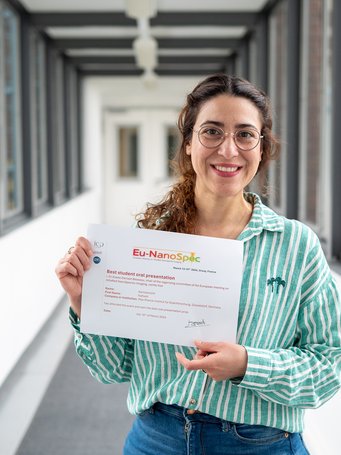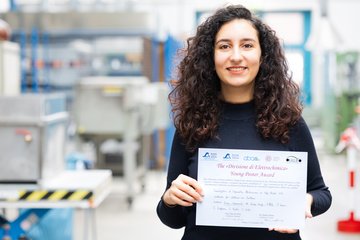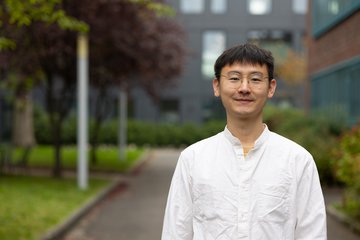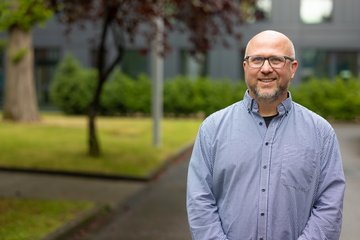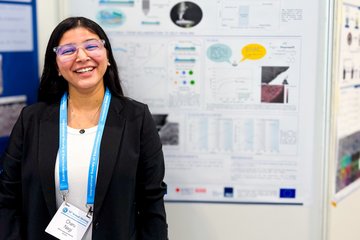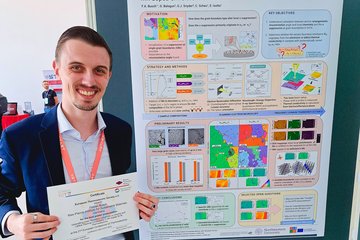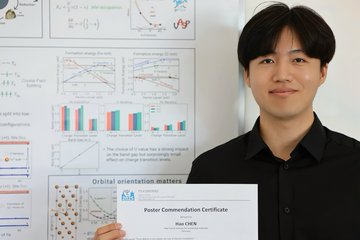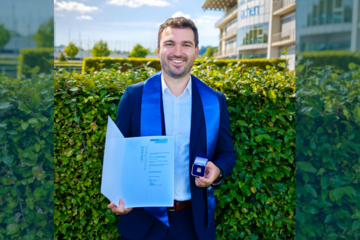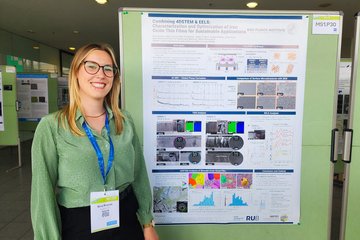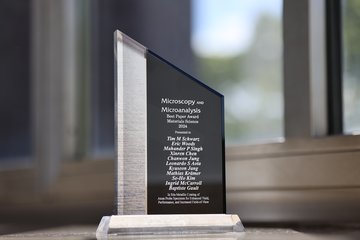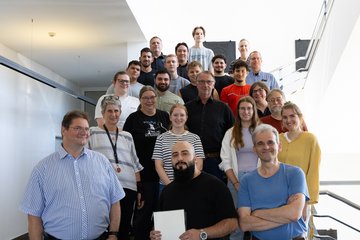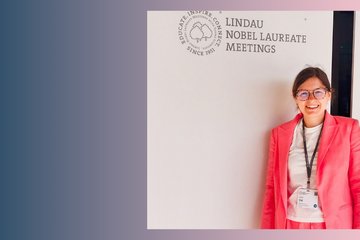Nafiseh Samiseresht wins Best Presentation Award
Nafiseh Samiseresht, a doctoral researcher at the Max Planck Institute for Sustainable Materials (MPI SusMat), received the Best Presentation Award at the European Meeting on InfraRed Nanospectro-Imaging 2024 in Orsay, France. Her award-winning presentation featured two studies on self-assembled monolayers (SAMs) that can control chemical and physical properties of surfaces used in catalysts, bio-sensors, and corrosion mitigation.
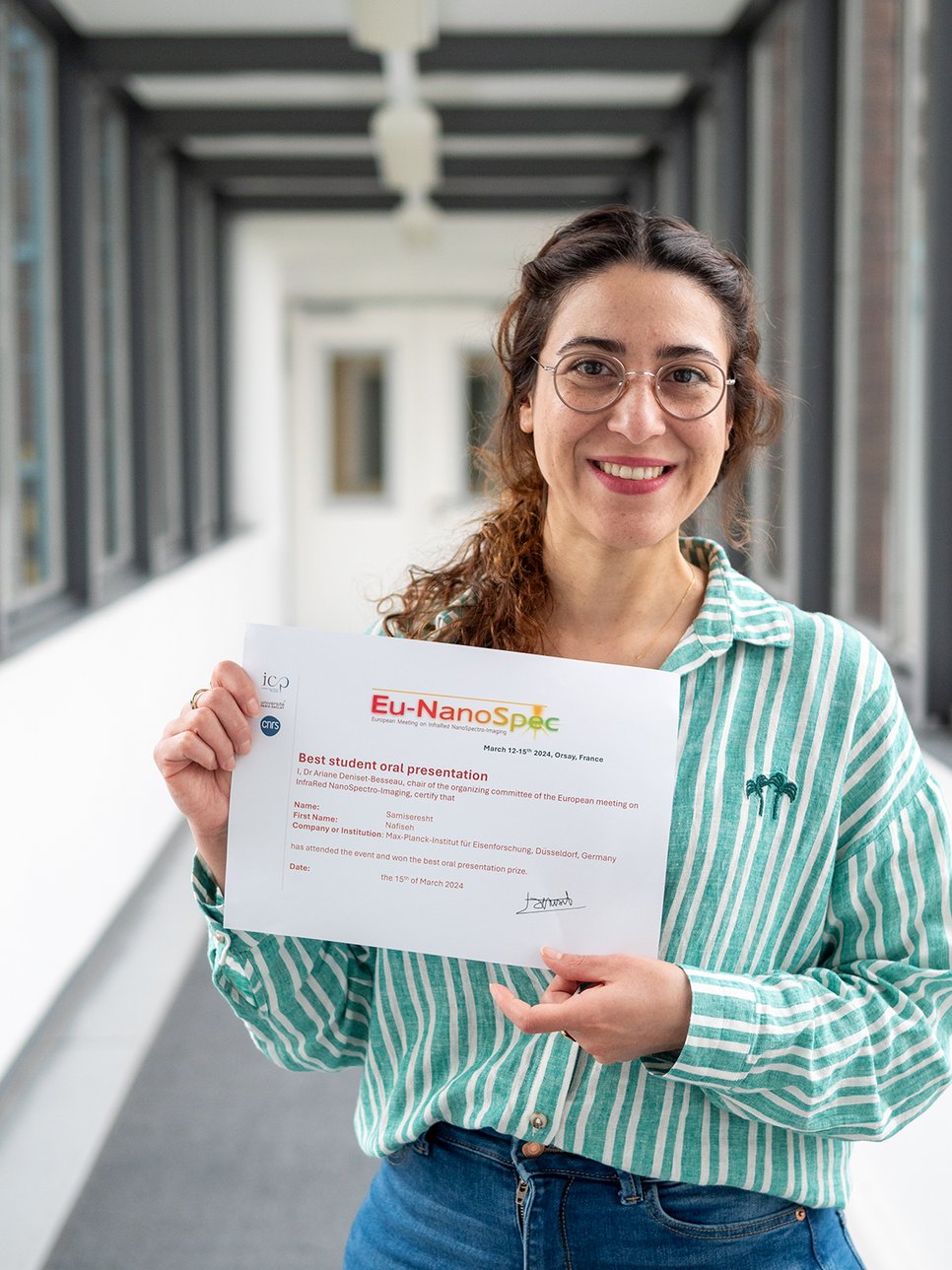
In her first study, Samiseresht achieved a breakthrough by observing interfacial water structures in SAMs with nano-infrared resolution for the first time. Oligoethylene SAMs, known for their protein-repellent interfaces, are crucial in biosensors and applications requiring controlled protein interactions. By using infrared nanospectroscopy (AFM-IR) under controlled humidity, she obtained nano-infrared spectra of interface water, discovering that the amount and structure of water adsorbed in oligoethylene domains depends on their molecular structure and the relative humidity.
Her second study focused on biomolecular sensors designed to detect the SarsCov II omicron variant. These sensors, based on DNA aptamers, offer rapid diagnostic capabilities with high specificity and selectivity. Samiseresht examined the sensor surface modified with DNA receptors and poly(ethylene glycol) blocking agents to understand surface changes during fabrication. Combining infrared spectroscopy and atomic force microscopy, she revealed regions with higher DNA molecule density and an overall inhomogeneous molecular distribution, pushing the limits of conventional infrared spectroscopy methods for single-molecule detection.
Samiseresht, a physics graduate from the University of Cologne, is pursuing her PhD at MPI SusMat and the RESOLV graduate school.
The European Meeting on InfraRed Nanospectro-Imaging highlights advancements in materials and life sciences through nanospectroscopy, fostering collaboration and networking among academics, industrial scientists, and researchers in the European nanospectroscopy community.
